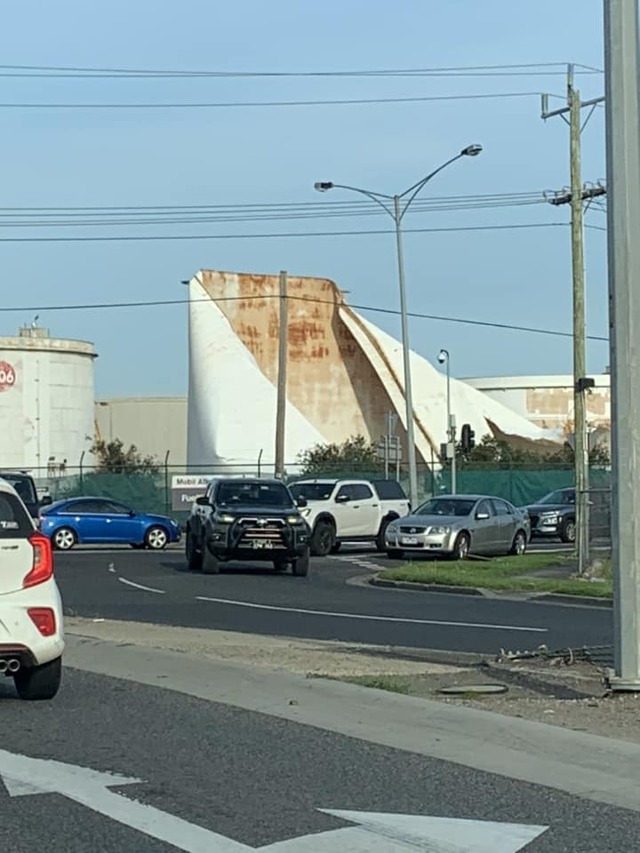Motorists crossing the Millers Road rail overpass on the way to Altona will now notice a big difference, with the giant fuel tank situated closest to the Kororoit Creek Road roundabout, torn down.
Demolition crews began dismantling the vast cylinder on the morning of Tuesday, September, 10 as part of Exxon Mobil’s plans to transition its Altona site from a refinery to a fuel storage facility.
With the company deeming tanks in its South Crude Tank Farm surplus to requirements, excavators began tearing at the tank’s white walls as morning commuters drove past, the giant hand on the ‘Take Five’ sign emblazoned on it, seemingly waving goodbye as it gradually came down.
Landmarks to some and eyesores to others, giant fuel tanks have been a feature of the Altona skyline since the refinery was built in the past war years and many stopped to take photos of the first one coming down and later shared them on social media.
“Gosh the memories, my dad worked there,” commented Laura Bewley beneath a photo of the demolition on Facebook.
“I’m nearly 40 and still remember Mum and I dropping off his lunch near the old cafeteria.”
Many others reminisced about working at the refinery, while some lamented the passing of an era where industry and manufacturing providing mass employment in Altona and surrounding suburbs.
Others welcomed an end to what they saw as symbols of pollution and the poor air and water quality the area was once renowned for.
Almost all wondered what would become of the land next once the clean-up and decontamination of the site is complete.
The answer to that question could still be some time off though.
In a statement released on the company’s website last month, Exxon Mobil said it had ceased using the remaining tanks in the South Tank Crude Farm and that all would be emptied and cleaned by the end of 2024.
However, there was no mention of any further demolitions and Exxon Mobil said it was conducting a study to identify future uses for parts of its Altona site.
“The study may identify alternative opportunities for the site including, but not limited to, industrial and commercial sector use, aligned with planning policies and to maintain the appropriate buffer areas required for the ongoing operation of the Mobil fuels terminal,” the statement said.







